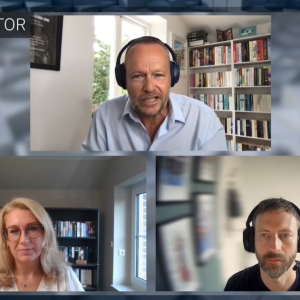The eponymous software is currently at v4.1, with v5.0 scheduled for the October timeframe, said Sigurdur Bjornsson, CEO of the Reykjavik-based company. He said that unlike other mobile email technologies that rely on synching the data with a back-end server, OpenHand works as a mobile thin client accessing data on the server, obviating the need to sync because there is no need to download.
There are pluses and minuses to such an approach. On the positive side, the end device need not have any sensitive data sitting on it, so that if it is lost or stolen, corporate security need not be breached. On the negative side, there is the reliance on being able to stay online. To address this, OpenHand has been beefing up an ability to download data on an ad hoc basis so that, for instance, a user could continue working offline then go back online for sending emails as and when it is possible.
We’ll enhance the offline capability further in v5.0, said Bjornsson. It will ship as default ‘on’ giving the user all the headers and the first kilobyte of the body, but the IT department will also have the ability to turn it off at the server and impose the pull mode if it deems that more appropriate for security policy.
OpenHand is based on the Louis protocol for data comms developed by researchers at the University of Iceland, some of whom became founders of the company. Bjornsson said the protocol was developed for high-latency, long-distance wired networks. Client/server apps work by having a database at one end and a desktop with the user interface and business logic, and Louis is all about separately the two elements on the desktop end, he said, adding that this is equally relevant for an unwired communication.
OpenHand refocused onto mobile comms around 2000, when the company began working with Nokia and launched the email/personal information management product in 2003. Tim Belfall, the company’s London-based COO, said another improvement in the offline capabilities of the product will be to differentiate between email, where companies can be reluctant to have the data stored on the device, and the other PIM features such as contacts, calendar, and tasks, which can be cached permanently there.
The next stage of development, life beyond PIM, is something that all mobile email developers face. If they are to continue to offer something compelling to businesses, they will need to mobilize other apps beyond the cluster collectively known as PIM. Our customers are asking for CRM next, but also sales and field force automation, said Belfall. He said this kind of capability is on the roadmap for 2007.
OpenHand works by placing its server inside a corporate customer’s trusted network to talk to an email server (Exchange or Domino) and interface with AAA and/or RSA servers for security purposes. It will then notify the remote devices that they have mail so they can go to their email server to view and work on it, or transmit part of it for someone who has activated the ability to work offline. There is no network operations center, and the OpenHand server itself is free. Customers pay 11 pounds ($21) per user, per month. Belfall added that, for customers using a DMZ outside their firewall and in front of the public internet, OpenHand adds what it calls a gender server in the DMZ to mediate comms between the OpenHand server behind the firewall and the outside world.
The company’s current go-to-market strategy, defined last September, is to target IT and telecoms resellers, the former with the ability to offering PIM today and apps mobility next year, the latter with the promise of a carrier-neutral email offering with which they can migrate their customers from one carrier to the next, without getting tied in to, say, the Visto-based offering from Vodafone or the Seven-based one from T-Mobile.






